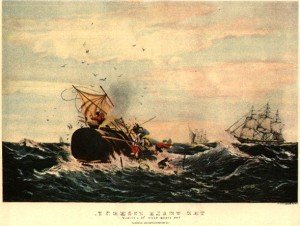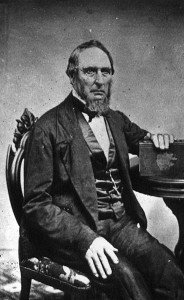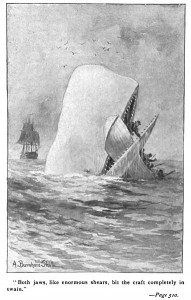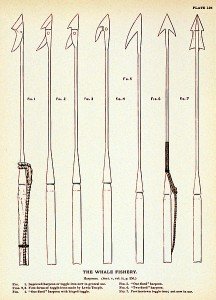There is no greater community connection to the old whaling industry than Nantucket Massachusetts. Nantucket’s citizenry as well as it’s merchants were thriving whether the general economy was booming or sluggish. Whale oil was in great demand throughout the world for this was the fuel used to light homes and streets.

Nantucket Whaling Museum
Nantucket has one of the finest museums you’ll find anywhere that portrays the story of the whaling industry… it’s sailors, ships, captains, methods, dangers and economic impact.
The Nantucket Whaling Museum is a must stop for anyone planning a visit to this scenic island. The museum is located at 13 Broad Street and is operated by the Nantucket Historical Association. The museum is dedicated to the history of whaling. This is where you can relive the time when a small town launched wooden ships into the Atlantic Ocean for the start of their long trips around Cape Horn and into the Pacific Ocean.
The Strange and Tragic Tale of the Whale Ship Essex
From all the stories of the great whale ships that called Nantucket home, the tragic tale of the whale ship Essex demonstrates just how dangerous this profession was in the early 1800’s. The sequence of events that befell the Essex and it’s crew is unique to all other whaling stories and was responsible for later novels being written. It’s a hair raising and shocking story of being stranded literally in the middle of nowhere and running out of food.

A Whaler’s Life
A whaler could depart on a ship from Nantucket Island and literally be away working at sea for a few years. If he had a family they could be without him for possibly years. Whaling was a very unique occupation.
Typically a captain would be hired by the ship’s investors and be responsible for signing up a crew. If he was fortunate the captain might find experienced sailors around Nantucket. If an experienced crew wasn’t available, and there was a shortage, then recruiting green sailors from further inland was necessary.The ship would be provisioned by it’s owners and any pay the captain and crew would receive would be a share of the profits at the end of the voyage. Size of shares were entirely dependent on the rank and function of the crew mate. The largest shares of course went to the investors and then the captain.
The Pacific Sperm Whale
1800’s whalers were especially hunting for the Pacific Sperm whale. They were killed primarily for their excellent oil. This whale oil was used not only in lighting but also in cosmetics, soap and a variety of products.
During the 1800’s the job of killing whales was done from smaller whaleboats launched from the side of the larger whale ship. The whaler crews would use harpoons to grab the mammal. The whale would pull the whale boat by the harpoon’s line and eventually tire at which time the sailors would kill it with lances. The entire endeavor was dangerous. The small whaleboat could be capsized easily and at only a moments notice. Additionally, it was known that sperm whales rather than fleeing underwater after being harpooned might very well turn around and attack the whaleboat.

The Attack on the Essex
There have been several writings on the attack of the Essex. Probably the most comprehensive account of the attack, aftermath and 1800’s Nantucket whaling life in general is… In the Heart of the Sea: The Tragedy of the Whaleship Essex by author Nathaniel Philbrick. Another is, Shipwreck of the Whaleship Essex by author Owen Chase. It’s also common knowledge that Herman Melville used the Essex incident as a model for his latter chapters in his book Moby Dick.
The crew of the Essex had been having good luck harpooning sperm whales during November of 1820 in the middle of the Pacific Ocean. This area was some 2,000 miles off the west coast of South America. On November 20th things changed dramatically. This was over one year since the Essex had departed Nantucket Island in August 1819 and the unthinkable happened.
The Essex was attacked and rammed, not once but twice, by a sperm whale that appeared to come from the area where other female sperm whales had been successfully harpooned and lanced just prior. It was said that this bull sperm whale seemed to have a purpose in it’s attack. It was if this bull whale was enraged by the killing of the female whales and wished to take revenge out on the large mother ship the Essex. The ship that the harpoon crews went back to.

Although the Essex was not a new ship it was not a poorly made vessel either. The force required by this bull sperm whale would have had to be tremendous to push over the hull of the 87 foot ship. It was speculated that the whale had to have been nearly as long as the ship. This prolonged attack caused the Essex to go over on her side with her sails in the water. The crew left the floundering vessel using their whaleboats which were few. The Essex had been short two whaleboats due to earlier storms and the evacuation was a crowded one. Twenty crew in all crowded, along with provisions, on the three small whaleboats.
After two nights and after several sailors returned to the Essex to grab hold of as many provisions as they could take onto the small whaleboats they left the sinking vessel. What transpired next over several months pushed men to the breaking point and beyond.
Marooned on a Pacific Island and Eventual Rescue
Because of earlier reports concerning Native cannibalism on some Pacific islands, the Essex crew was particular as to which island chain they would try to reach with their primitive whaleboat sailing vessels. After one month in these small boats, hungry, tossed around and beaten by the harsh sun, they finally reached land. It was a small island and while it did at first supply some needed food, the provisions didn’t last. Another move had to be made.
After some time the survivors set sail from the island (Henderson) on two whaleboats. After a while the two boats separated and went their own way. In February of 1821, some 95 days after the sinking of the Essex, a boat carrying the captain and three other crew members were picked up by another whale ship out of Nantucket just off the west coast of South America. They had survived their ordeal by consuming the remains of other crew members who had died or were executed on the boat. The second boat was never heard from again.
Three men had stayed back on the island and were later rescued. It was also later said that lots had been drawn on the captain’s boat as to who would be sacrificed and who would be the executioner. The entire story shocked Nantucket when word reached there.
In total there were eight survivors of the original crew from Nantucket. Four from the captain’s boat, three rescued later off Henderson Island and another who had deserted the ship when the Essex visited South America prior to the whale attack and sinking.
Links below are to additional Trips Into History articles you may also find interesting…
The Tragic Sinking of the General Slocum off New York
The Loss of the SS Wexford on the Great Lakes
The G.P. Griffith Passenger Steamer Disaster
Visit the Historic Paul Revere House in Boston MA

Visiting the Nantucket Whaling Museum
As mentioned above, visiting this museum is a trip back into the days when whaling made Nantucket. A great many ships left Nantucket during the 1800’s hunting the whale. It was how one made a living in Nantucket.
This museum will take you back to that time when an entire town’s economy depended on the whaling industry. Exhibits at the museum include a large amount of nautical items, captain’s journals and a very interesting video and it’s really a not to be missed museum.
I would also highly recommend any of the books mentioned earlier in this article. The story of the Essex tells what can happen when disaster strikes far from civilization and what ordinary people can and will resort to when trying to survive. It’s a shocking and enlightening true story.
Nantucket is a very scenic and historic place to visit and a stop to the Nantucket Whaling Museum is a great addition to any trip there.
(Article copyright 2013 Trips Into History. Photos and images in the public domain)
